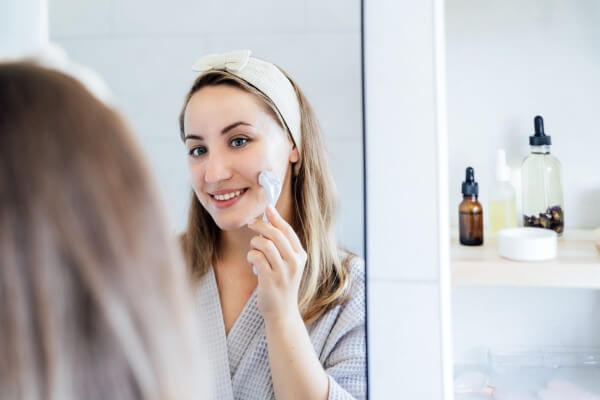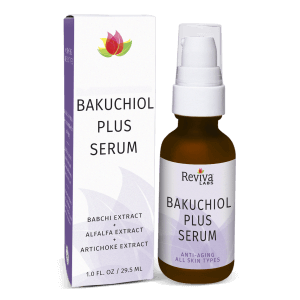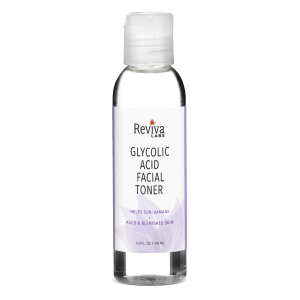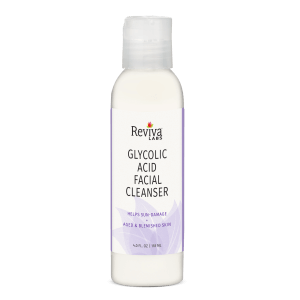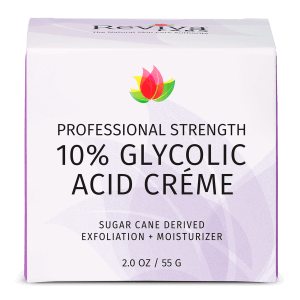Ingredients, Reviva Labs, Skin Care
Can AHAs and Retinol be Used Together?
Skincare enthusiasts often find themselves navigating through a multitude of products, each promising transformative results for the skin. Products containing AHA (Alpha Hydroxy Acids) and retinol stand out as two of the most popular choices. However, can these two powerhouse ingredients be used together in a skincare routine? The answer isn’t straightforward, but with a bit of insight into each, you can potentially incorporate both into your skincare regimen.
AHA Exfoliating
AHA’s, known for their exfoliating properties, work on the skin’s surface. They gently dissolve the bonds that hold dull, dead skin cells on the surface, revealing the fresher, brighter skin beneath. This process not only improves skin texture but also helps in evening out skin tone. Common types of AHA’s include glycolic acid, lactic acid, and mandelic acid, each with its own unique benefits.
Retinol is a form of Vitamin A that helps brighten the skin but acts more deeply within the skin. It’s praised for its ability to accelerate cell turnover, stimulate collagen production, and fight the signs of aging like fine lines and wrinkles. It also has a reputation for being potent, which is why many approach it with caution, especially when thinking of combining it with other active ingredients like AHA’s.
AHA and Retinol
The concern about using AHA’s and retinol together is rooted in the potential for irritation. Since both ingredients act as exfoliators, the thought is that using them together can lead to an increased chance of skin sensitivity, dryness, and irritation. However, this doesn’t mean they can’t be used together at all. It’s all about how you introduce them into your skincare routine.
The first step is to understand your skin type and its tolerance. If you have sensitive skin, it might be best to use these ingredients separately. For others, the key is to introduce them gradually and observe how your skin reacts. You could start by using AHA’s in the morning and Retinol at night or using them on alternate days. This staggered approach allows your skin to acclimate to each ingredient without overwhelming it.
Another important consideration is the concentration of these ingredients in your products. Lower concentrations can be a good starting point if you’re new to using either AHAs or retinol. For instance, a product with a lower percentage of glycolic acid, a common AHA, combined with a moderate strength Retinol can work well together, given they are introduced gradually and used with caution.
It’s also essential to focus on supporting your skin’s barrier when using both AHA’s and Retinol. This means incorporating hydrating and soothing ingredients into your routine. Products with hyaluronic acid, ceramides, and peptides can offer the necessary hydration and repair to support the skin. These will help in offsetting any potential dryness or irritation caused by AHA’s and Retinol.
Sun protection is another non-negotiable aspect when using these ingredients, which can make your skin more susceptible to sun damage. Applying a broad-spectrum sunscreen with an SPF of 30 or higher every day is vital, even if you’re indoors most of the time or it’s a cloudy day.
Be Patient, Results Will Happen
Lastly, patience is key. Both AHA’s and retinol take time to show results. It’s tempting to expect overnight miracles, but skin renewal and repair are gradual processes. It could take several weeks, or even months, to see noticeable changes. During this period, it’s important to continuously monitor your skin’s response and adjust your routine as needed.
So, the more complicated answer is that AHA’s and retinol can be a dynamic duo in your skincare routine, provided they are used thoughtfully and cautiously. Understanding your skin type, starting with lower concentrations, staggering their usage, focusing on hydration and barrier repair, and being diligent with sun protection are all crucial steps in safely incorporating these ingredients. With patience and the right approach, you can enjoy the combined benefits of these powerful skincare allies.






